The Pacific Northwest is a dream for mushroom hunters. Winter mushroom foraging here differs from other parts of the country due to climate, elevation, and a lack of snow in many areas. In many places, it doesn’t really snow at all; it just rains a lot. And mushrooms love all the rain. Many don’t even mind if it’s a cold, drizzly type of rain (even if you mind, a lot!).
Of course, some areas get snow and a lot of it; there are many variances across the states. Usually, you just have to change elevations a little bit to increase your chances of finding edible mushrooms. Often, along the coast is excellent foraging year round due to the lack of snowfall and abundant rains.
Check out our guides for other seasons: Spring Mushroom Foraging in the Pacific Northwest, Summer Mushroom Foraging in the Pacific Northwest, and Fall Mushroom Foraging in the Pacific Northwest.
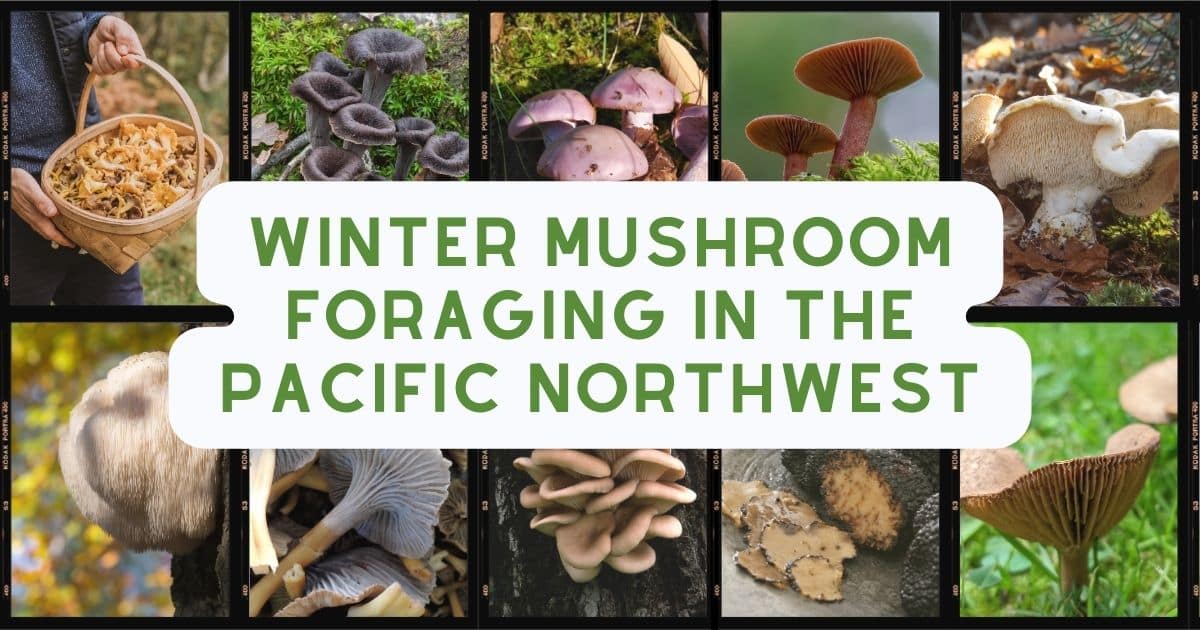
Winter Mushroom Foraging in the PNW, by Species
Winter chanterelles (yellowfoot)
Yellowfoot chanterelles grows in vast, dense patches on the forest floor. It’s not uncommon to harvest bucketful’s when you find them. They prefer mossy areas with lots of rich, decaying organic material. Yellowfeet aren’t as flavorful as “true” chanterelles, but they make up for it in numbers. Excellent added to winter stews, dehydrated for later use, or cooked up fresh as an accompaniment to a main meal.
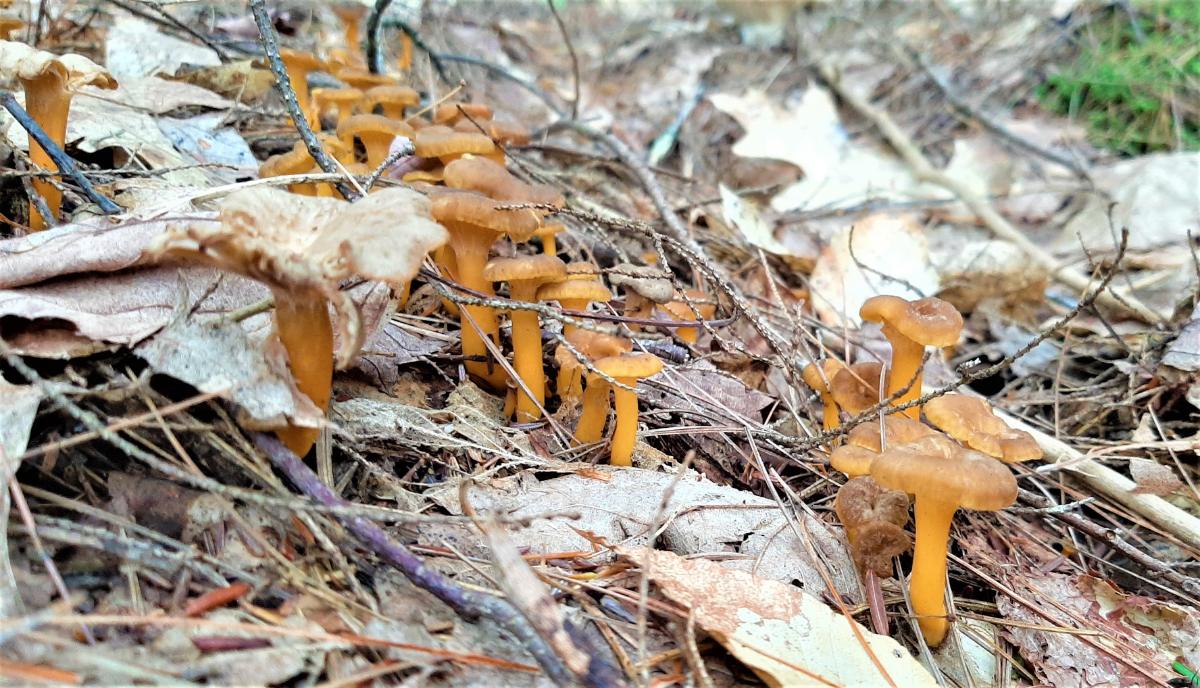
Black Trumpets
Black trumpets, also commonly called black chanterelles in the west, are a tricky bunch. They have an impeccable ability to meld right into their surroundings. Between their dark coloring and diminutive size, it takes some real careful searching to find them. Luckily, though, they usually grow in wide dense groupings so if you’ve found one, you’ve found 100. Black trumpets have a unique super umami flavor that transcends — there is nothing to compare it to because it is quite unique, and wonderful.
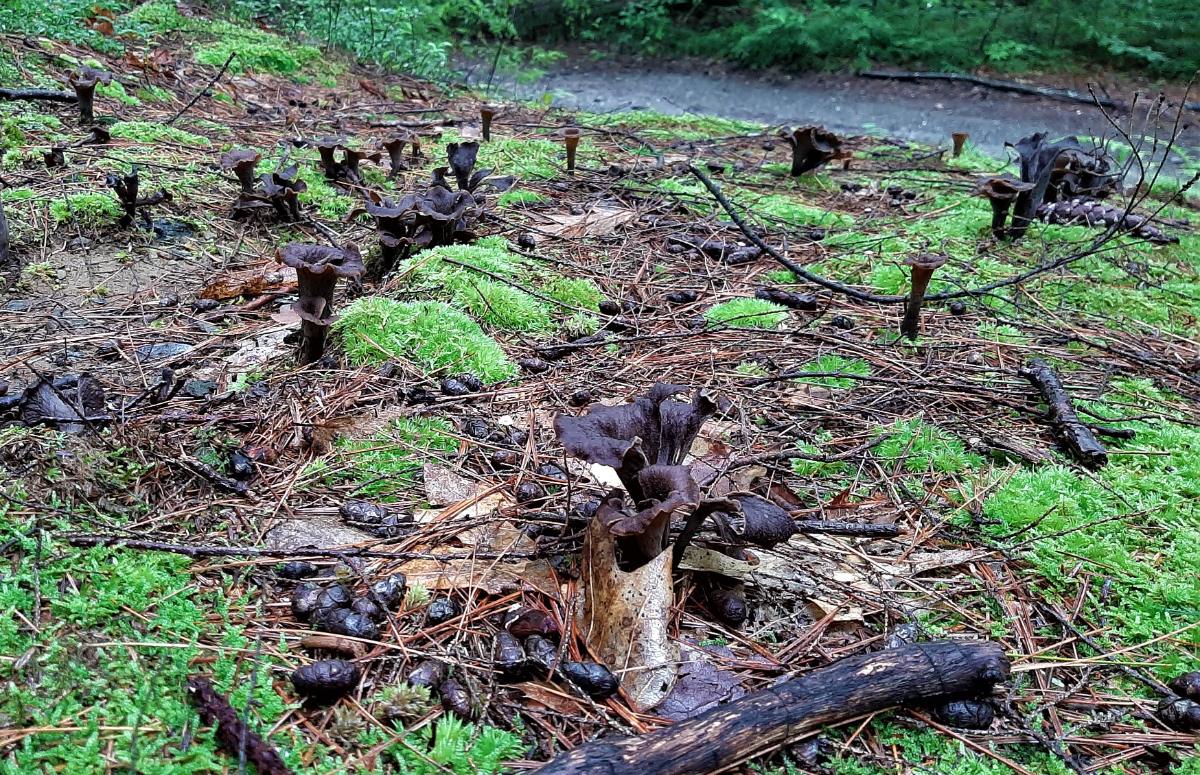
Lion’s Mane
Lion’s mane and its related Hericium species like cool weather. However, they don’t like it to so cold there is long-term freezing temperatures or snow. A great thing about these species is that, even though they can be tricky to predict, they’re hard to miss. That bright white against a brown tree trunk or green canopy really stands out. Lion’s mane is one of the top edible species and makes an incredible substitute for seafood in many recipes, including crab cakes.
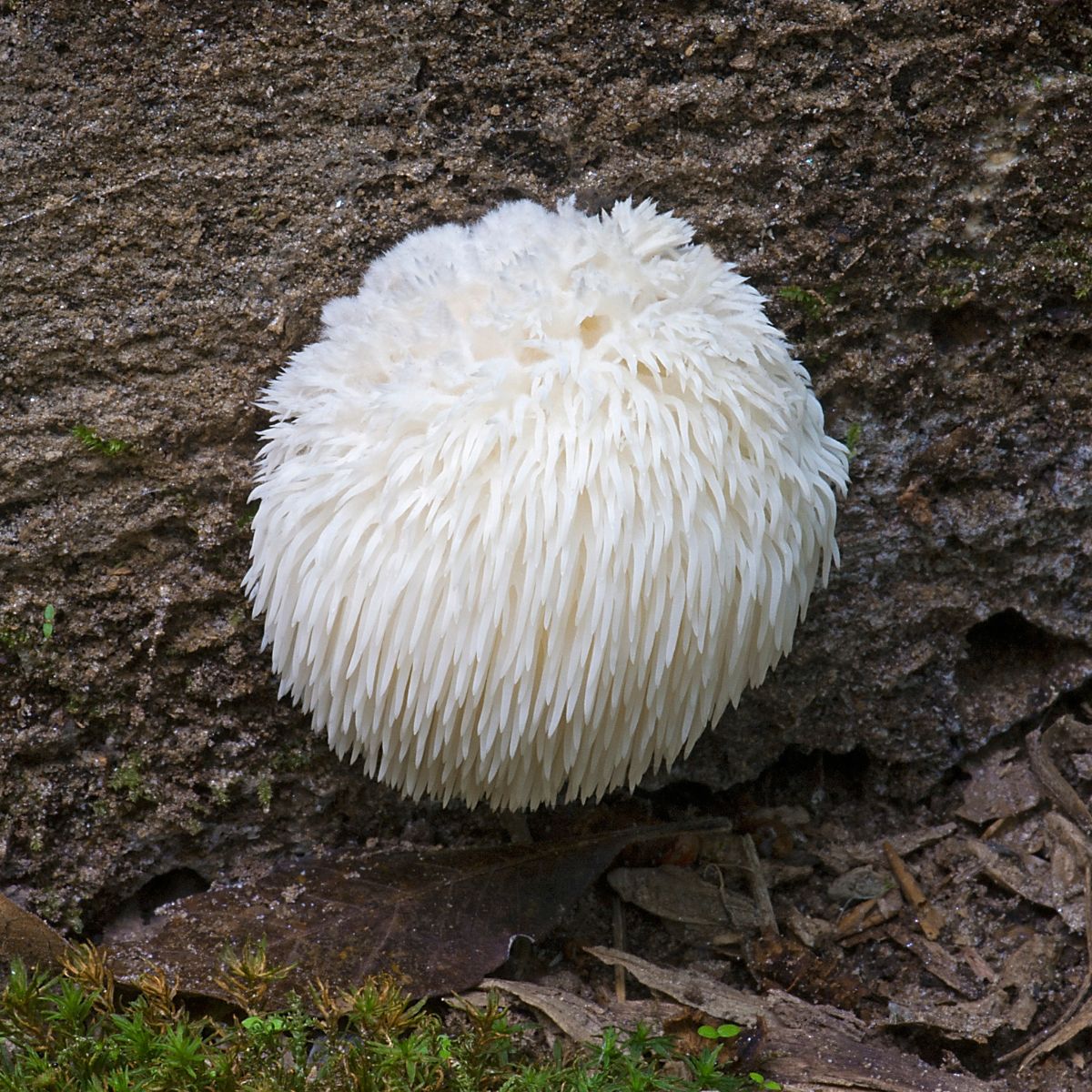
Hedgehogs
Hedgehogs are super cute, with short little teeth under the cap instead of gills. They’re on the top in most foragers’ lists of edibles, and for very good reasons. Their dense, meaty flesh and sweet flavor are incredible. From above, hedgehogs look rather dull with a flat tannish color cap and no distinctive properties to grab your attention. Be careful you don’t pass these by as “just another boring brown mushroom.” We find it good practice to always check the underside of every mushroom we find, just in case.
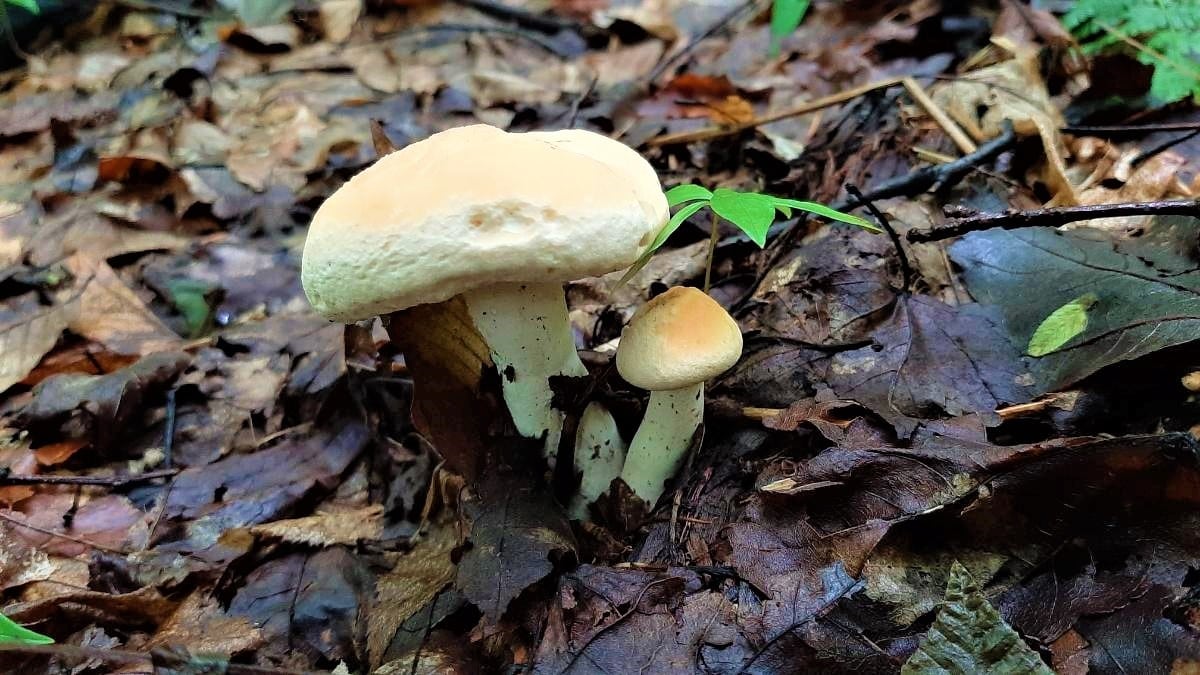
Truffles
Truffle season is from late December into March or April, depending on where you live in the PNW. Three types of truffles grow in the PNW, associated with Douglas firs in winter. Truffle hunting takes some skill and possibly an extraordinary dog – it’s a great winter hobby to take up!
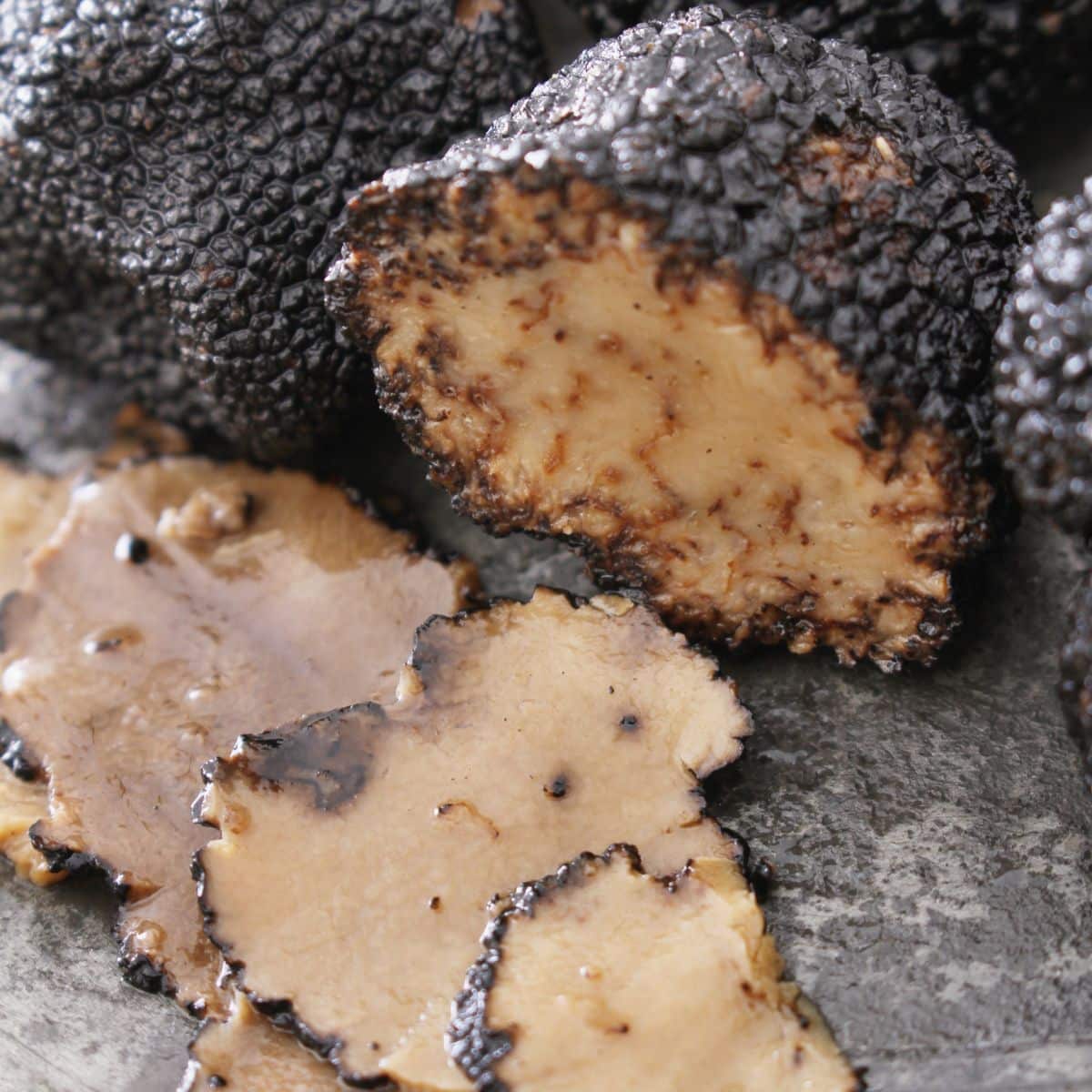
Candy Caps
What can we say about a mushroom that smells like sweet maple-syrup?! It’s like a mushroom dream come true. Not only do they smell like maple, they also taste like it. You can use these mushrooms, dried and powdered, in baking! Candy caps are in the milky cap mushroom family, which means their gills “bleed” when cut. This is a key to identification. Candy caps also love the cool, rainy winters of the PNW.
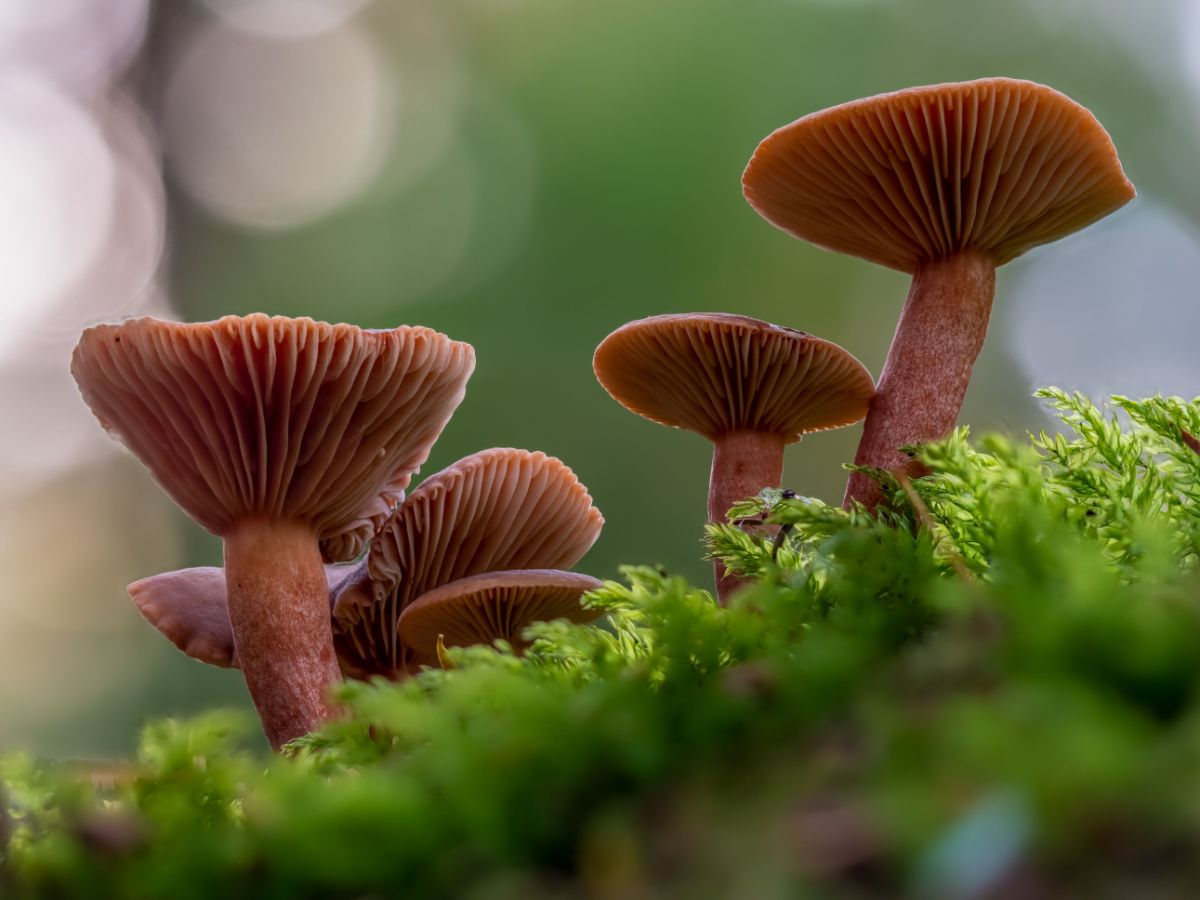
Wood Blewit
Wood blewits seem like they’d be an easy find, but they’ve got a few tricks up their sleeves. That brilliant purple coloring often fades to a dullish gray with age or excess rain (something the PNW has plenty of). The great thing is once you find one, you’ll likely find many others nearby. They tend to fruit in great numbers. This is a highly sought-after edible species — they’re a lot like supermarket button mushrooms in flavor and texture.
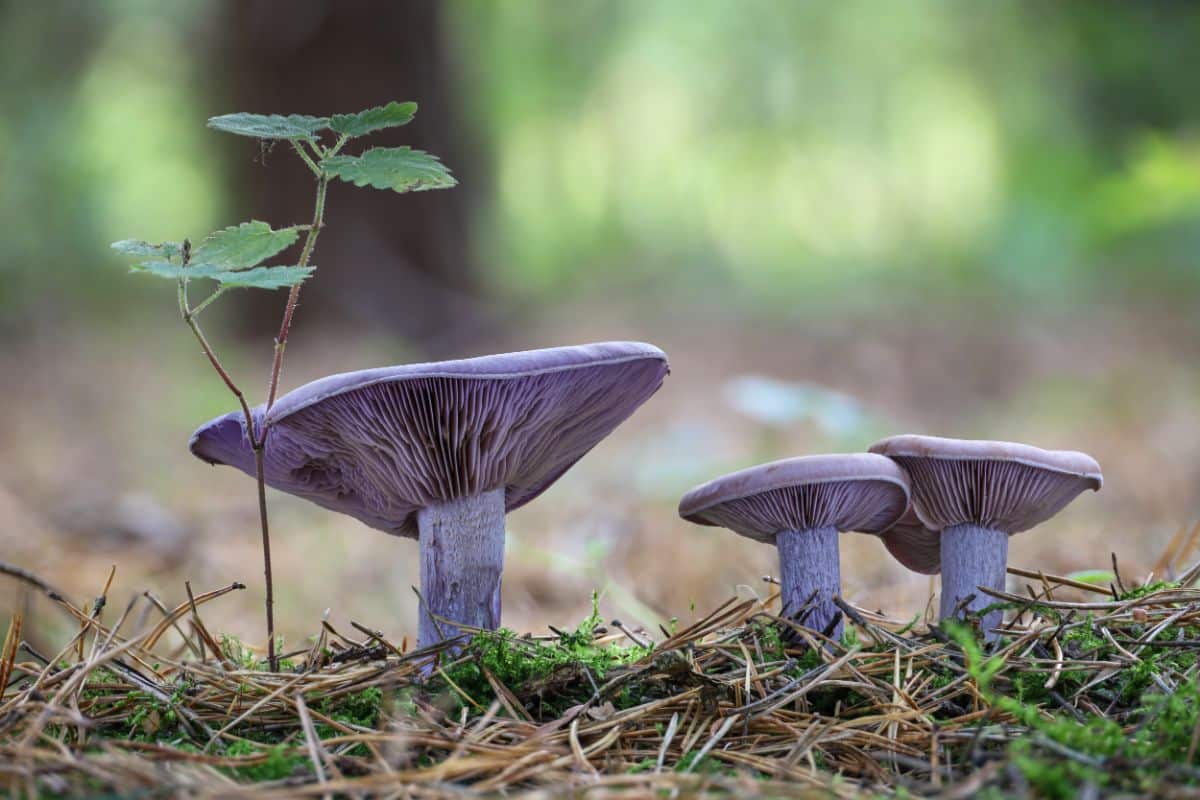
Oysters
Oyster mushrooms are the quintessential cool weather mushroom. They wait for the weather to be just in the right range, 40-55F, and then pop out in huge numbers. They also mature quite quickly, so it can be a race to get to good eating ones before the bugs, slugs, and deer get them. Oyster mushrooms are super adaptable in the kitchen, excellent stir-fried or just fried. They also make excellent jerky.
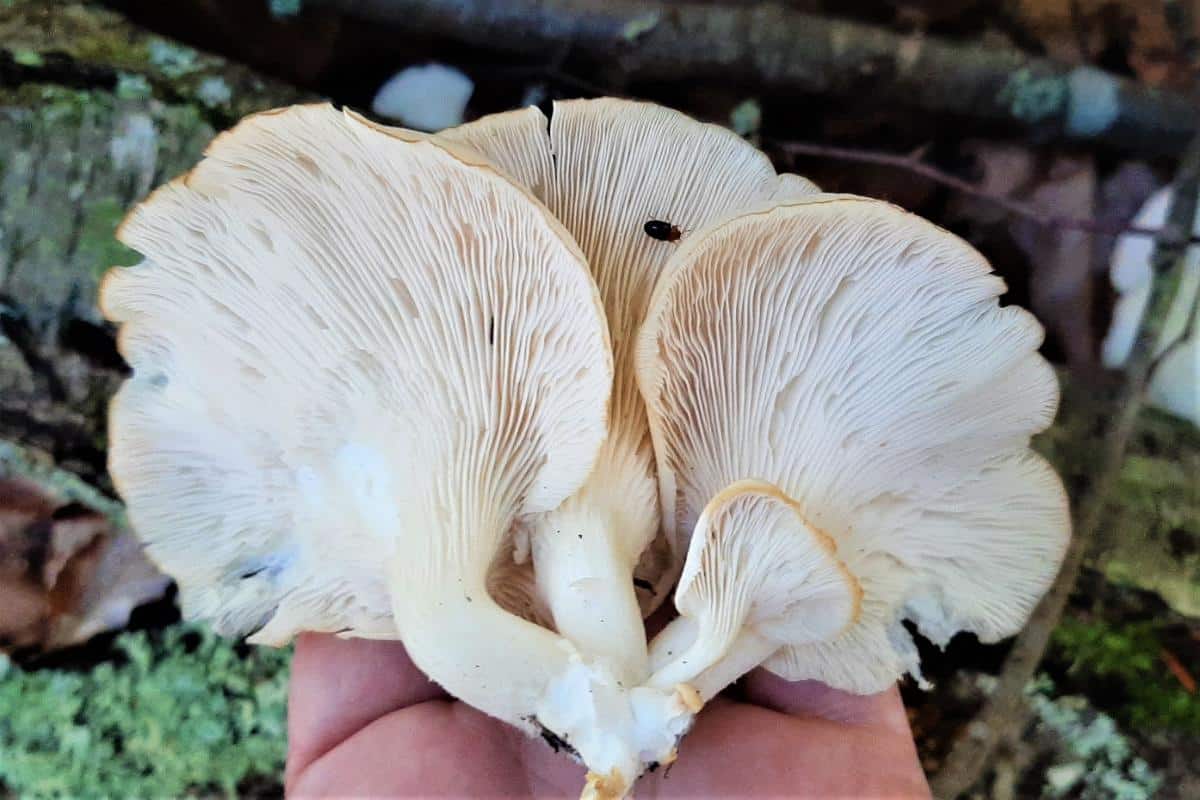
If you’re new to mushroom foraging, here are some great guides to get started: How To Be A Successful Mushroom Forager, Mushroom Foraging 101, and Mushroom Identification Pictures and Examples
Curious about winter foraging in other areas? Check out our guides for across the US.
- Winter mushroom foraging in New England
- Winter mushroom foraging in the Southeast
- Winter mushroom Foraging in the Midwest
- Winter mushroom Foraging in the Southwest

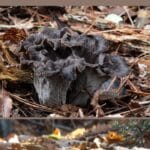
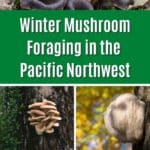
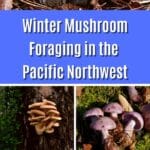
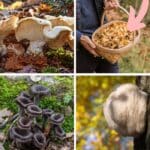
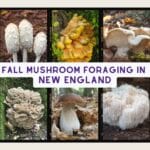
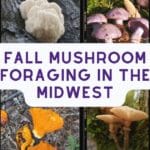
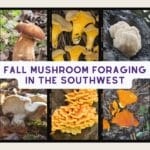
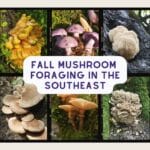
Martine van Buuren says
A great book for the PNW is Mushrooms of the Redwood Coast by Siegel and Schwarz
Jenny says
Yes, I love that book. I recommend it my article about identification books https://www.mushroom-appreciation.com/mushroom-identification-books-by-region.html
Victor G. says
Great article but I have to disagree on the taste opinion of blewits. Over here in the cental coast of BC, they are sweet and with extraordinary taste. Hard to explain but they are nothing like button mushrooms as you suggest. maybe in your neck of the woods but not here. I’m a mushroom forager and wild crafter and I cultivate 13 varieties of mushrooms. Somewhat new to cultivating but have over 50 years experience with foraging. One more thing, you did not mention cauliflower mushrooms. I’m sure you’ll find them in your area and here they can be the last mushrooms to be found in early winter. Here we are in zone 7a so we see more freezing than you do likely. In 2019 I found a specimen weighing 5kg (11 lbs) on the 29th of November with snow on the ground. It was an amazing discovery being snow white and the best tasting mushroom one could find. Anyway, keep up the great work.
Jenny says
Taste is always subjective :). It would be interesting to hear what others think of their taste. An 11lb cauliflower!! That’s amazing. I do need to add that to the list — total oversight on my part. Thanks for the reminder and feedback!